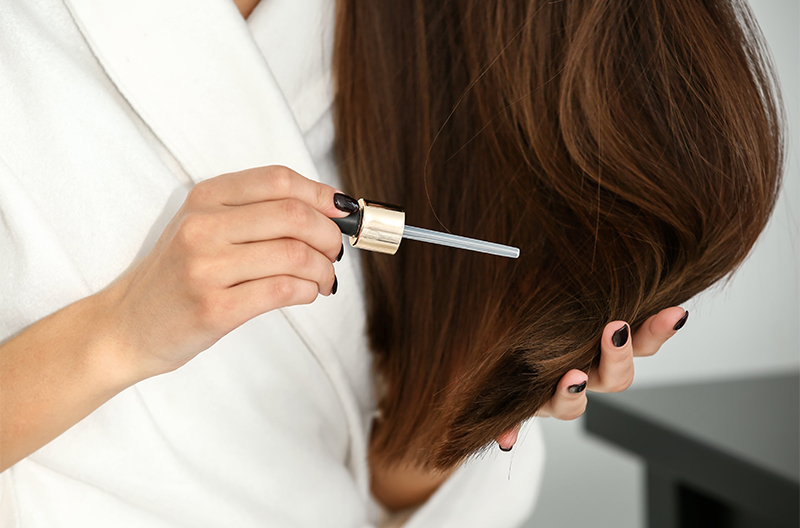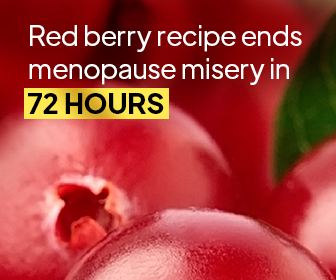Let’s face it — growing your hair strong and thick isn’t as easy as it used to be. Between blow dryers, hair curlers, and harmful chemicals in some shampoos, getting your hair healthy can be a challenge. Plus, you or someone close to you might be experiencing balding symptoms. In fact, the American Hair Loss Association reports that women actually make up 40 percent of hair loss sufferers. However, there are so many effective essential oils for ailments, so it only makes sense that there’d be some essential oils that target hair growth!
Coming up, we’ll go through some of the best essential oils for hair growth. The eight oils we’ve chosen all serve as great (all-natural!) help for growing your hair and keeping it healthy.
What Are Essential Oils for Hair Growth?
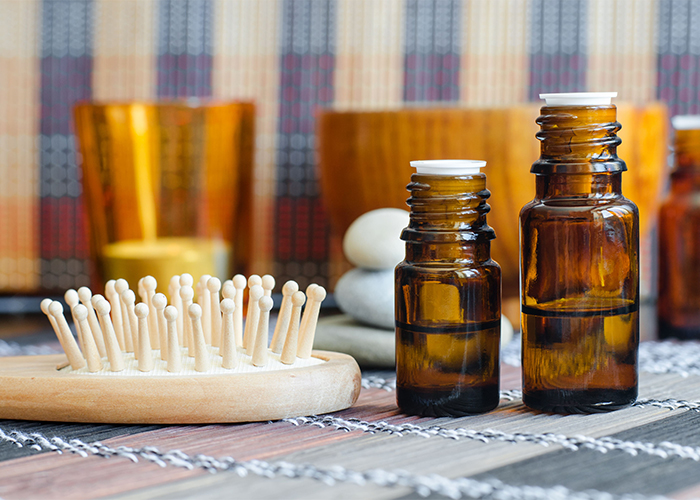
Are you skeptical about using essential oils to stimulate hair growth? We don’t blame you. It initially sounds too good to be true. However, when we did the research, we found plenty of scientific data to back up the hype behind these claims.
Basically, these oils are plant-based remedies that can have an effect on various parts of your hair or your hair growth processes. Some of the oils work by awakening and stimulating the hair follicles on your scalp, while others help moisturize and build up the protein in your hair to keep it from breaking.
Keep in mind that there’s no “miracle cure” for baldness. Sadly, if you’re already bald, rubbing essential oils onto your bare scalp won’t instantly give you luxuriously long locks. They’ll make your dome smell fantastic — which may, in turn, boost your self-esteem — but you won’t regrow what you’ve already lost.
However, if your hair is fragile, damaged, or exhibiting mild hair loss symptoms, incorporating these essential oils into your beauty regime can be beneficial. You can add essential oils known for encouraging hair growth and thickness into your daily routine by adding a few drops into your shampoo and conditioner, or by making a DIY hair mask once per week.
Do They Really Work?
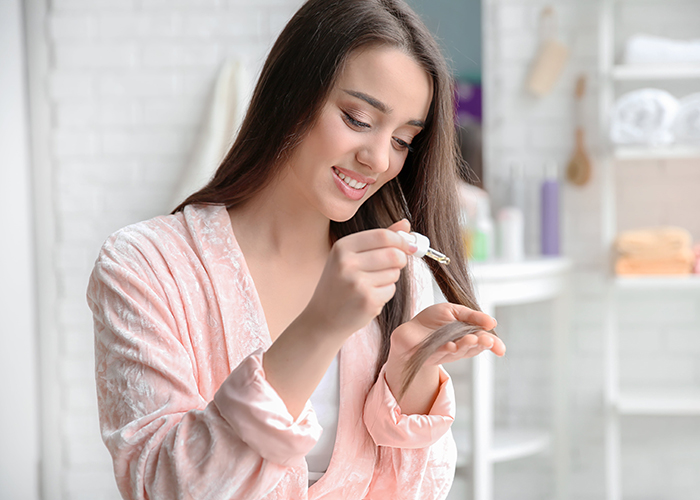
There are plenty of products out there that boast about giving you longer, thicker hair to combat baldness. So, do essential oils for hair growth really work? Well, try some for yourself! We always include some scientific data to back up our claims for each oil, so you can explore those facts below. However, every human is a unique individual, and the only way to truly know if these oils will “work” for you, is to test them out on your own.
That said, using essential oils on your hair and body is all about providing a natural and safe alternative to harsh chemicals that often have negative side effects for you or the environment. In this sense, essential oils for hair growth “work” by helping your hair growth in a natural, much safer, way.
The 8 Best Essential Oils for Hair Growth
1. Lavender
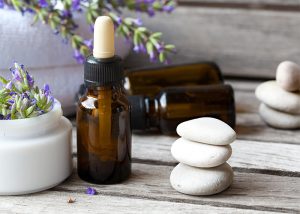
Lavender essential oil smells fantastic and can be used to help hair grow faster. One study assessed lavender oil’s hair growth capabilities by using it on mice. Lavender was applied to the mice once daily, five days a week, for four weeks. The study found that the lavender application helped to speed up the mice’s hair growth and increased their number of hair follicles.[1] This suggests that lavender oil may have similar effects on human hair as well.
On top of this, lavender essential oil is one of the best stress-reducing essential oils for anxiety. If your hair sheds when you’re over-stressing, this is the oil for you. You can use lavender essential oil in a hot shower and allow the steam to give you a DIY aromatherapy treatment to calm your body and mind.
2. Peppermint
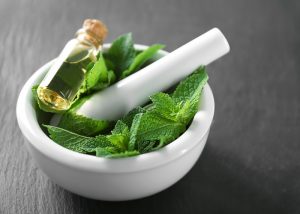
This minty and invigorating essential oil is also beneficial for your hair. The component most noted for its hair growth benefits in this oil is menthol.[2]
Researchers also noted peppermint as a possible hair growth supplement for humans based on animal studies.[3] In the primary study using peppermint essential oil, mice showed increased hair length, scalp thickness, and follicle count.[4] This all contributes to a healthy scalp ideal for growing hair. Additionally, the study proved that a 3 percent peppermint solution was safe to use without harmful side effects.
Not only is it a great oil for hair growth, but it’s also one of the best all-natural essential oils for headaches. So using peppermint on your scalp can benefit your hair while helping to relieve mild headache pains — promoting a healthy head all around!
3. Cedarwood
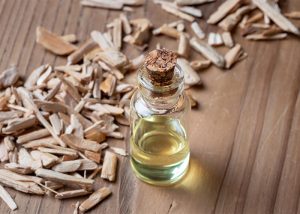
This earthy, slightly sweet-smelling oil can help you stimulate your hair follicles as needed. One study used a blend of oils, including cedarwood oil, as a massage oil on human scalps. In the end, there was a significant positive effect on the patients.[5]
The researchers noted essential oils as a valid treatment option for mild baldness.[6] This oil also works great as a gift to the men in your life because it has a more woodsy scent.
Cedarwood essential oil blends well with many oils, making it one of the most versatile and benefit-packed oils to use.
4. Rosemary
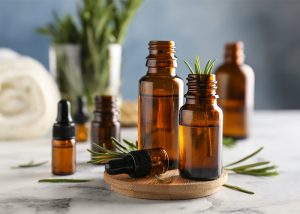
Rosemary is herbaceous, fresh, and somewhat sweet-smelling. Plus, it’s one of the best essential oils for hair growth. One study compared rosemary oil and minoxidil (a common medication for treating balding) as a hair treatment for humans. It found that rosemary essential oil did the job just as well as the minoxidil test group,[7] proving its dramatic hair growth power.
In another study using a blend of oils, including rosemary oil, two groups were studied after three and seven months. The group receiving the oil treatment had six times more participants end up with positive hair outcomes than the control group.[8] Again, this shows the potential impact of rosemary essential oil on hair growth and how useful it can be for you.
5. Lemongrass
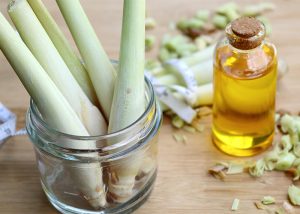
Sometimes, to keep your hair healthy and your follicles unclogged you have to make sure dandruff is kept at bay. If you suffer from dandruff, then you know how difficult it can be to control.
However, one study found that a topical application of lemongrass essential oil actually reduced dandruff in human hair over the course of one to two weeks.[9] Researchers noted that the 10 percent dilution was the most effective at combating dandruff with no negative side effects.[10]
6. Tea Tree
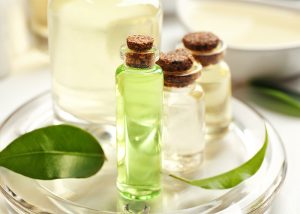
Tea tree oil is more than just one of the best essential oils for acne reduction. The same antimicrobial and antibacterial properties that make tea tree essential oil such a powerful skin treatment are also what makes it a great scalp cleanser as well.
A study using tea tree oil and minoxidil showed that tea tree oil also has promise for combating symptoms of baldness. In the study, it was used alongside minoxidil and increased the benefits for patients more than when they used minoxidil alone.[11]
Other citings suggest that tea tree oil’s properties make it dandruff-fighting as well.[12] However, more research is needed in this area.
Give tea tree essential oil a try and incorporate it into your shampoo to get some amazing scalp-cleaning abilities. It may even help to unclog hair follicles and promote hair growth that way too.
7. Clary Sage
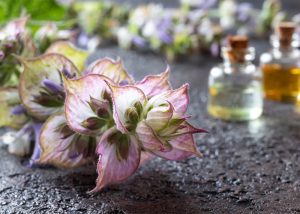
Clary sage smells herbaceous and fresh, perfect for a hair mask to keep you smelling like you just stepped out of the shower. It also has some mild hormone controlling properties, as suggested in one study.[13] This contributes to its ability to help control your sebum (natural oil) levels.
Applying clary sage to your scalp may, therefore, help clear oily skin and unblock hair follicles, making room for fresh hair growth.
8. Ylang Ylang
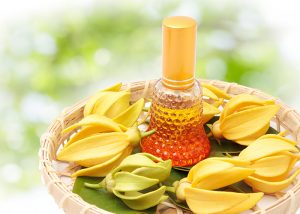
Ylang ylang is a very floral, sweet-smelling oil. In the Victorian days, one research paper stated that ylang ylang was highly valued in hair tonics to promote shine and growth.[14]
Today, there’s much less science on ylang ylang essential oil and hair growth. However, some sources do report ylang ylang as a natural stimulant for sebum oil production.[15] In this way, it can help those with dry scalps to increase your natural shine and conditioning.
Give it a try as a base for a blend along with some of the other great oils on this list. With just a few drops of these oils, you can start your journey to longer, healthier hair.
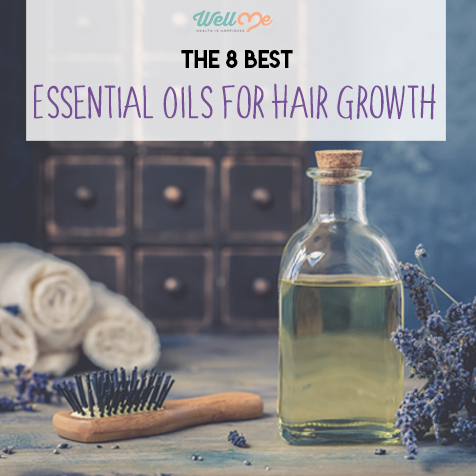
References
- [1] http://www.toxicolres.org/journal/view.html?doi=10.5487/TR.2016.32.2.103
- [2] https://www.ncbi.nlm.nih.gov/pmc/articles/PMC4289931/
- [3] https://www.ncbi.nlm.nih.gov/pmc/articles/PMC4289931/
- [4] https://www.ncbi.nlm.nih.gov/pmc/articles/PMC4289931/
- [5] https://www.ncbi.nlm.nih.gov/pubmed/9828867
- [6] https://www.ncbi.nlm.nih.gov/pubmed/9828867
- [7] https://www.ncbi.nlm.nih.gov/pubmed/25842469
- [8] https://jamanetwork.com/journals/jamadermatology/article-abstract/189618
- [9] https://www.karger.com/Article/Abstract/432407
- [10] https://www.karger.com/Article/Abstract/432407
- [11] https://www.karger.com/Article/Abstract/432407
- [12] https://onlinelibrary.wiley.com/doi/full/10.1111/ics.12232
- [13] https://onlinelibrary.wiley.com/doi/abs/10.1002/ptr.5163
- [14] https://pdfs.semanticscholar.org/a5b0/3064f60a7773719426c9b1bddc37acfed696.pdf
- [15] http://www.salvatorebattaglia.com.au/wp-content/uploads/2019/01/A4_Monograph_Ylang-ylang_ONLINE-1.pdf

